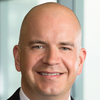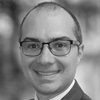Functional Claiming for Software Patents: Leveraging Recent Court Treatment
Surviving 112(f) and Disclosing Functional Basis for Software to Meet Heightened Standard of Review

Welcome! Strafford is now BARBRI! The expert courses you know from the trusted global leader in legal education.
Course Details
- smart_display Format
On-Demand
- signal_cellular_alt Difficulty Level
- work Practice Area
Patent
- event Date
Thursday, November 4, 2021
- schedule Time
1:00 p.m. ET./10:00 a.m. PT
- timer Program Length
90 minutes
-
This 90-minute webinar is eligible in most states for 1.5 CLE credits.
-
Live Online
On Demand
This CLE course will guide IP counsel on functional claiming in software patents and USPTO prosecution. The panel will examine recent court treatment and explain how to navigate the issue of functionality given the uncertainties in the prosecution and litigation contexts.
Faculty

Mr. Kukkonen has more than 20 years of experience in strategic intellectual property counseling, technology transactions, and litigation. Specifically, he advises clients on patent infringement and validity, preparation and prosecution of patent applications, prelitigation case assessment, active patent litigation, licensing and partnering agreements, IP due diligence, and brand protection matters. Mr. Kukkonen has prosecuted, analyzed, and litigated patents across various technologies including high-technology/software, medical devices, and energy technology. His experience in the high-tech arena includes database technologies, cybersecurity, artificial intelligence and machine learning, ridesharing/carpooling, robotics, enterprise software, cloud computing, big data, blockchains, mobile phone software and hardware, telecommunications, Internet of Things (IoT), semiconductors, nanotechnology, optical devices, computer and microchip architecture, virtual and augmented reality, and signal and image processing. In the area of medical devices Mr. Kukkonen has handled matters related to medication delivery devices, wireless health care, digital health, bedside patient monitors, breathing apparatus including respirators, incubators, infusion pumps, physiological sensors including cardiac monitors and blood pressure devices, ophthalmic technologies, and bone fixation plates and systems.

As a trial attorney, Mr. Lamberson has attended over a dozen patent jury trials in districts around the country, including as lead trial counsel for Microsoft in Microsoft v. Corel, where a jury in the Northern District of California returned a verdict that Corel had willfully infringed six Microsoft patents. He is also a firm expert on fair, reasonable, and non-discriminatory (FRAND or RAND) damages. He led the damages team in the Huawei v. T-Mobile litigation, which involved the assertion of twelve standards-essential patents relating to LTE technology. He also has a significant appellate practice. He has participated in several appeals and has argued before the Federal Circuit and Ninth Circuit. He worked on the appeals in Williamson v. Citrix, where the Federal Circuit went en banc to significantly change the law for means-plus-function claiming. He has a significant post-grant practice as well. He is a member of the USPTO patent bar and has participated in multiple inter-partes review proceedings, arguing before the PTAB.
Description
In Williamson v. Citrix Online, the Federal Circuit issued a decision relating to means-plus-function claims. This decision has dramatically impacted interpreting functional claim terms, regardless of whether claim language is subject to being construed in prosecution, post-grant challenges at the PTAB, or district court litigation.
Since Williamson, it is typically not enough to claim a general purpose computer as the only structure for performing a recited function. Instead, the patentee must disclose specific algorithms or other structures sufficient to perform the claimed function.
Listen as our authoritative panel of patent attorneys provides a quick review of the Williamson decision, discusses how the courts have applied the Williamson decision, and then examines functional claiming in the context of software patents. The panel will explore the benefits and risks of using functional claims and offer best practices for surviving Section 112(f) and leveraging functional claims to maximize patent protection.
Outline
- How the courts are treating functional claiming since Williamson
- Functional claiming in software patents
- Benefits and risks involved with using functional claims
- Best practices for leveraging Section 112(f) and functional claims for maximum patent protection
Benefits
The panel will review these and other crucial issues:
- What has the impact of the Williamson decision been on functional claim interpretation for software patents?
- What are the benefits and limitations of using functional claims for software patents?
- What are the lessons from recent decisions regarding functionality in software patents?
Unlimited access to premium CLE courses:
- Annual access
- Available live and on-demand
- Best for attorneys and legal professionals
Unlimited access to premium CPE courses.:
- Annual access
- Available live and on-demand
- Best for CPAs and tax professionals
Unlimited access to premium CLE, CPE, Professional Skills and Practice-Ready courses.:
- Annual access
- Available live and on-demand
- Best for legal, accounting, and tax professionals
Unlimited access to Professional Skills and Practice-Ready courses:
- Annual access
- Available on-demand
- Best for new attorneys
Related Courses

Patent Prosecution Malpractice: Minimizing the Risk of Claims
Thursday, November 13, 2025
1:00 p.m. ET./10:00 a.m. PT